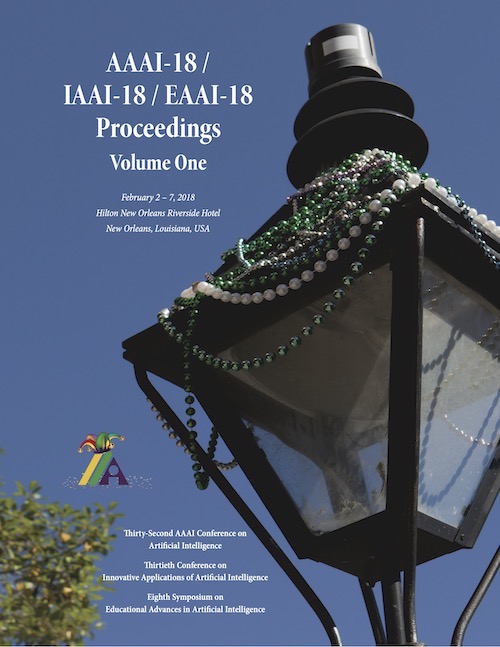Published:
2018-02-08
Proceedings:
Proceedings of the AAAI Conference on Artificial Intelligence, 32
Volume
Issue:
Thirty-Second AAAI Conference on Artificial Intelligence 2018
Track:
AAAI Technical Track: Applications
Downloads:
Abstract:
Bipolar Disorder (BD) and Major Depressive Disorder (MDD) are two common and debilitating mood disorders. Misdiagnosing BD as MDD is relatively common and the introduction of markers to improve diagnostic accuracy early in the course of the illness has been identified as one of the top unmet needs in the field. In this paper, we present novel methods to differentiate between BD and MDD patients. The methods use deep learning techniques to quantify differences between visual scanning patterns of BD and MDD patients. In the methods, visual scanning patterns that are described by ordered sequences of fixations on emotional faces are encoded into a lower dimensional space and are fed into a long-short term memory recurrent neural network (RNN). Fixation sequences are encoded by three different methods: 1) using semantic regions of interests (RoIs) that are manually defined by experts, 2) using semi-automatically defined grids of RoIs, or 3) using a convolutional neural network (CNN) to automatically extract visual features from saliency maps. Using data from 47 patients with MDD and 26 patients with BD we showed that using semantic RoIs, the RNN improved the performance of a baseline classifier from an AUC of 0.603 to an AUC of 0.878. Similarly using grid RoIs, the RNN improved the performance of a baseline classifier from an AUC of 0.450 to an AUC of 0.828. The classifier that automatically extracted visual features from saliency maps (a long recurrent convolutional network that is fully data-driven) had an AUC of 0.879. The results of the study suggest that by using RNNs to learn differences between fixation sequences the diagnosis of individual patients with BD or MDD can be disambiguated with high accuracy. Moreover, by using saliency maps and CNN to encode the fixation sequences the method can be fully automated and achieve high accuracy without relying on user expertise and/or manual labelling. When compared with other markers, the performance of the class of classifiers that was introduced in this paper is better than that of detectors that use differences in neural structures, neural activity or cortical hemodynamics to differentiate between BD and MDD patients. The novel use of RNNs to quantify differences between fixation sequences of patients with mood disorders can be easily generalized to studies of other neuropsychological disorders and to other fields such as psychology and advertising.
DOI:
10.1609/aaai.v32i1.11289

AAAI
Thirty-Second AAAI Conference on Artificial Intelligence 2018
ISSN 2374-3468 (Online) ISSN 2159-5399 (Print)
Published by AAAI Press, Palo Alto, California USA Copyright © 2018, Association for the Advancement of Artificial Intelligence All Rights Reserved.
